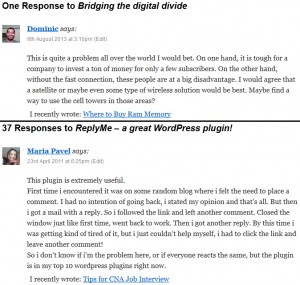Do you ever feel that Facebook has got the better of you? That it has some kind of force that draws you in every time you go near your computer? Well if so you should know that you are not alone.
Two researchers here at MIT have conducted some experiments to see if they could halt their addiction in its tracks. The researchers put some code into their machines that monitors the sites they visit through their browser. When they visit Facebook too often an electric shock is sent through a peripheral device to their keyboard, and they get a jolt.
Now if you have ever spent any time with cows you will know that they respect electric fences because they hurt, and the researchers think that this system might deter them from too much use. They call it Pavlov’s Poke.
And surely enough after a few shocks the boys used Facebook a little less.
There is also the story of a young man who hired a woman through our local newspaper to help him avoid Internet distraction. She sat next to him in his office and slapped him in the face when he lost the thread of his searches. Probably a little cumbersome as a solution though, not to mention pricey. Read the story here.
So the boys came up with an automated version that posts a job request through Amazon’s Mechanical Turk service when the quota is reached. The job requires a person to call and abuse you reading from a script, simple and a much better use of human resources I would think.
And we might really be talking about addiction here. A study cited in Forbes by the University of Chicago claims that Facebook is more addictive than cigarettes or alcohol, with the average user spending 400 minutes a month on the site.
Another report from the University of Utah shows that people who use Facebook a lot are led to believe that other people’s lives are better than theirs.
This is an easy conclusion to come to when you look at photos of your friends (and people you don’t really know or never really speak to face to face) while they are on holiday, having fun in clubs, meeting new people and going to music festivals, while you are sitting at home in front of your computer feeling miserable. Photos of arguing with your partner or the kids waking up at 4 in the morning are rarer.
Researchers at the University of Michigan came to the same conclusion. Read their report in full here. This is a brand new piece of research.
The truth is that these social media sites are designed to be both addictive and necessary. They make you feel better in some ways, people of course like you, but they distort views of real life and can lead to distraction and unhappiness.
They make money by selling, so they need as many online presences as they can get and for as long and often as possible. They are (as they openly admit) marketplaces, designed to sell access to their users for publicity purposes. They are not apolitical and have goals, and their success makes or breaks their share price.
On a personal note I recently applied for a job in the USA as a freelance journalist. Although I have lots of experience, good qualifications and a measurable reader base, I got no further than the application form. The employers wanted details of my social network, Facebook, Google plus etc, not my writing.
I had nothing to offer them.



